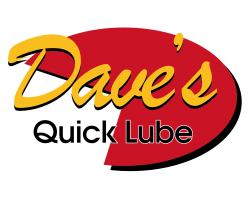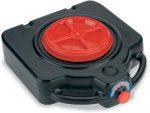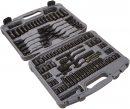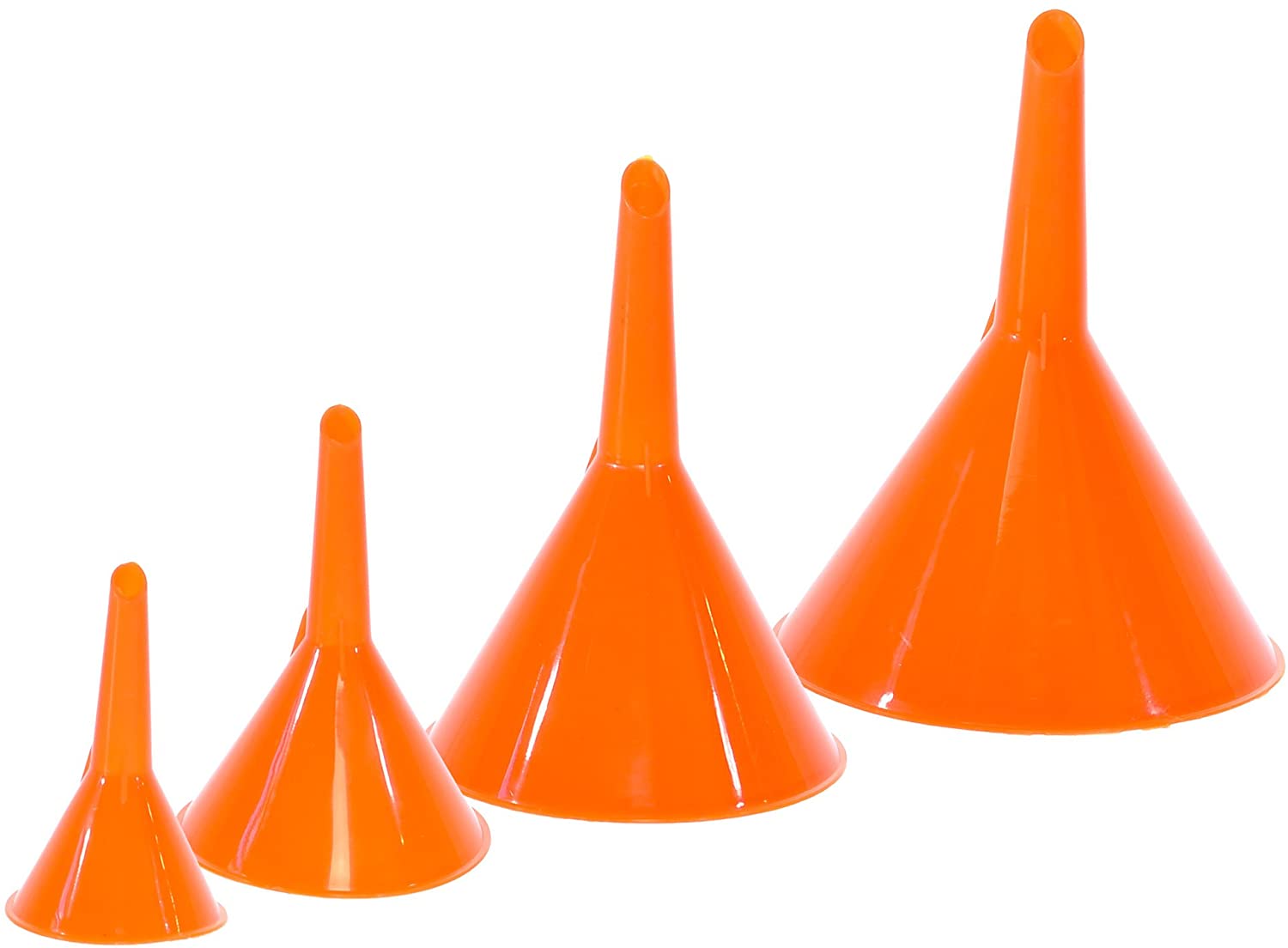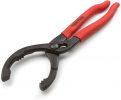Looking for proper instructions on how to change the oil in a car? We got you covered. In this article you will learn about:
- How long does an oil change take
- Truth about Oil Change Intervals
- What do they do in an oil change?
- Quick and easy steps on how to change the oil on your own
Changing the oil in your car is a good way to learn about your car more closely and it also saves a huge amount of money and time.
Though oil changing process is same in all the vehicle, there are certain things about oil type, oil change intervals, specifications, ratings, viscosity charts, grading, and other oil properties that confuse you a bit. We will discuss all these things that confuse most people.
By the end of this article, even if you don’t know anything about the car, you will be able to change the engine oil on your own properly.
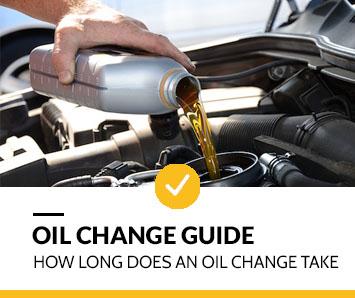
How To Change Oil In Car [hide]
Oil Change Duration
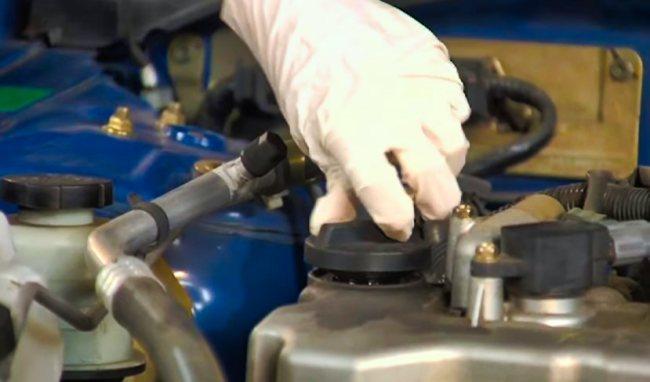
Oil changing is an essential part of your automotive maintenance routine. Though it is the most common thing in every engine maintenance, people sometimes overlook the simple details that belong to the process.
As a result, car owners not only waste a lot of money each year but also a huge amount of time is being wasted in the mechanics’ shop.
In this section, I will try to give you a clear knowledge of how the oil changing takes place in a dealership or service shop and what are the basic things they do during an oil change.
How Long Does an Oil Change Take?
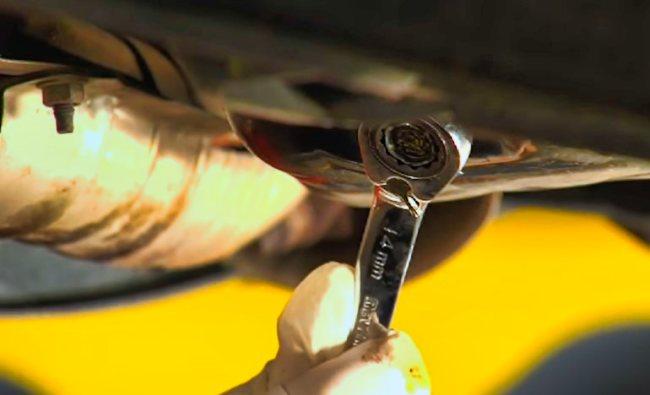
So, this question may pop up in your head that how much time you should reserve for an oil-changing day because you are a busy person on a very tight schedule. Frankly speaking, it depends on the place that you are going to have the job done.
Generally, an oil change takes about 30-45 minutes in a servicing shop. But sometimes they check other things on the car to ensure safety and that may take some time. But if your car is regularly maintained, you shouldn’t be bothered with this extra time. Oil change on a new car takes less time than an old one.
Specialized lubricant shops can do this job more quickly, which may be between 15 to 30 minutes excluding the queue time. It is because they don’t do other services that much.
What is involved in an Oil change?
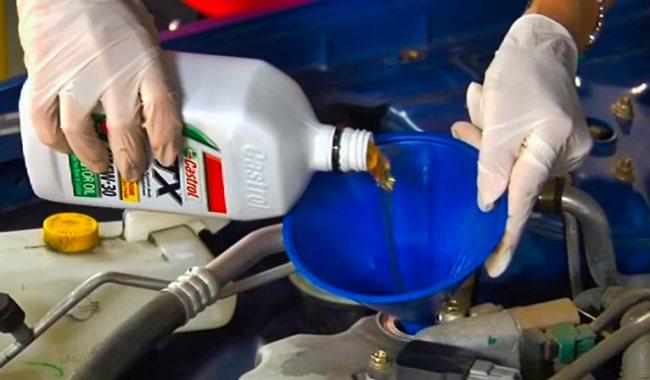
Though some of the garages have some fancy setup that might catch your eyes, the basic setup of an oil change is the same in all the servicing stations.
The things that involve in an oil changing process are draining all the existing oil, replacing the old oil filter with a new one, then filling the engine with new oil according to tank size.
The huge setup you see in the dealership mainly lifts the car high, because then it becomes easy to drain all the oil fully, and it consumes most of the time.
Preparation for Oil Change
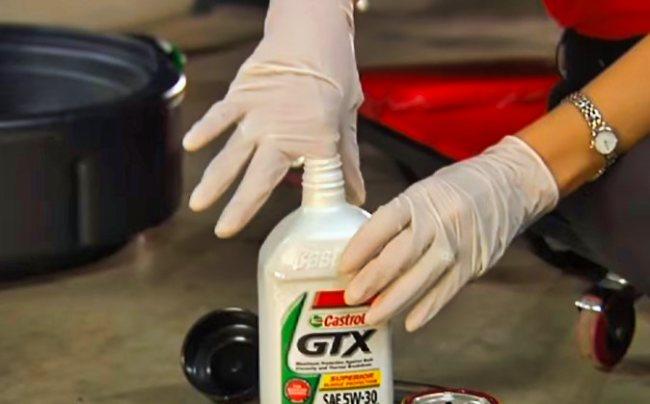
In the ‘maintenance’ section of your vehicle’s user’s manual, you will find a specification for your car’s engine oil. That specification includes the rating and the oil grade you should use while the car is new. Otherwise, there’s a chance of warranty violation.
You should also check the oil capacity of your engine before buying a container. It should mention the capacity as quarter e.g. quart.
SAE (Society for Automotive Engineers) gives each oil to be used in a vehicle a viscosity rating and API (American Petroleum Institute) gives certificates to that oil for each type of engine e.g. API SN for a Gasoline engine. API service marks to ensure that this oil maintains the standards for International Lubricants Specification Advisory Council (ILSAC).
What Kind of Oil You Should Use?
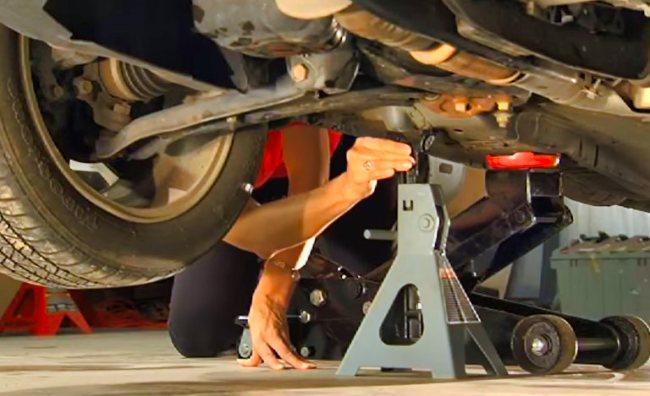
You will notice in the specifications of oil that it requires SAE 5W-30 or SAE 10W-30 oil. This is the viscosity (thickness) rating of the motor oil. The ‘W’ in the rating means winter, the number preceding W refers to the weight of oil when cold (at 0-degree Fahrenheit) and the latter refers to the weight when hot (at 100 degree Celsius).
Motor Oil companies supply a viscosity chart for their oil, which gives us an idea of how the oil will behave at different temperatures.
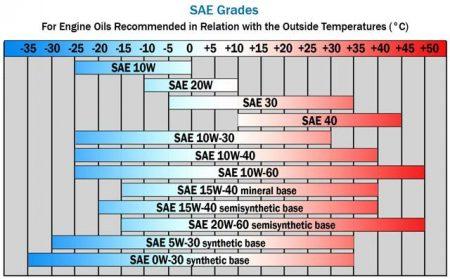
Oil becomes thinner in hot and thicker in cold. The less the cold number, the better the oil will perform in colder regions i.e. in winter. On the other hand, the more the hot number, the better it will perform for a hot temperature i.e. in summer.
For new engines, you should always go by the rating specified in the owner’s manual. But for an older car with higher mileage higher viscosity oil should be used.
Required Tools
Oil Drain Pan – Lumax Drain Pan and Waste Oil Storage
You need to place a drain pan below the drain hole. You can get them in the nearest auto repair shop. We recommend using a drain pan with waste storage. This type of pan is ideal for oil recycling. You should keep in mind that drained oil can leave a strain on the environment.
Socket Set – Stanley Drive Socket Set
You will be needing an appropriate wrench to unplug the drain plug. If you buy a socket set you will get all ANSI standard sockets and ratchets. You can also get these tools from any hardware shop.
Oil funnel – Majic Plastic Funnel Set
You can get an actual funnel or you can cut a plastic bottle and use that as a funnel to pour new oil into the engine.
Oil Filter Pliers – Tekton Oil Filter Pliers
Oil filters also need to change when changing motor oil. The oil filter helps to filter the dirt when the oil coming back from the engine to the oil pan.
Car Ramps – FloTool Vehicle Ramps
You need ramps to create space underneath your car. You can create space by driving one wheel up onto the curb.
Optional Tools
Jack Stands – Torin Steel Jack Stands
Jack stands are a must but they will give you space to work underneath your car. When using jack stands to lift the vehicle go through the manual to see the method and the jacking points of the car.
How to Change Oil by Yourself – Step By Step
Now that you know about the oil type that your engine required and what are tools required, you can change the oil by yourself. The advantages of changing the oil on your own are that you have full control over which oil brand to use and you can also find the best quality filter for your car, and this will be possible because you will save the extra money that the service would cost.
Now let me show you how to change oil by yourself in five easy steps.
Step 1: Get all the Tools and New Oil
Gather all the things mentioned in the tools section, put your gloves on. Get a new oil and oil filter.
When buying an oil jug, buy ½ quart more than specified in the manual.
Step 2: Drain the Old Oil
Park the car on the level ground. With the technique mentioned above create space underneath your car. Now go underneath with the drain pan and the correct socket with a rachet. Find the oil pan and the drain bolt. Place the pan slightly away from the bolt and unplug it with the socket (counter-clockwise).
When working under the vehicle you will find it difficult to work with a small rachet. In this case, you can use a long breaker bar, this will give you a mechanical advantage. And the bolt will come out easily.
Wait until all the oil comes out. When finished easily put the bolt right back in and be careful not to tighten the bolt too much.
Step 3: Replace the Old Filter with a New One
Now take the oil drain pan right under the oil filter. Most cars have an oil filter just beside the oil pan. But on some models, you can only access the filter from the top, so be sure to check the manual. You can loosen the filter by hand or using a filter plier. Once loose, the oil will start to come out.
Remove the old filter completely. Take off your gloves, take the new oil filter and apply a light coating of oil with your hand on top of the filter, where it will be in contact with the engine. This will create a seal. Install the filter by tightening it with your hand. Don’t overtight it, you will know when it’ll fit.
Step 4: Fill the Engine with New Oil
Find the oil cap under the hood, it should have an oil cap symbol on it. Use a funnel and fill the engine with the proper amount that is specified in your manual.
Step 5: Check the Oil Level
Lower the car back to the ground. Wait for few minutes to settle all the oil in the pan. Now use the dipstick to observe the level of the oil. If the oil is somewhere between the minimum and maximum mark, then you have done the process perfectly.
But if it is below the lower mark, you need to add some. Also, you have to remove some oil if the oil exceeds the maximum mark. Because extra oil will hamper your engine.
You can also find other details in this video. And when working on your own, always take safety measures and precautions.
